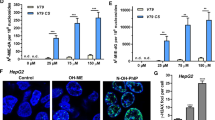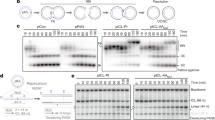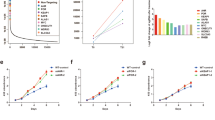Abstract
Sequence-dependent formation and lack of repair of polycyclic aromatic hydrocarbon-induced DNA adducts correlates well with the positions of p53 mutational hotspots in smoking-related lung cancers (, ). The mycotoxin aflatoxin B1 (AFB1) is considered to be a major causative agent in hepatocellular carcinoma (HCC) in regions with presumed high food contamination by AFB1. A unique mutational hotspot, a G to T transversion at the third base of codon 249 of the p53 gene is observed in these tumors. To test whether a selectivity of AFB1 adduct formation is related to this peculiar mutational spectrum, we have mapped AFB1-DNA adducts at nucleotide resolution using ligation-mediated PCR and terminal transferase-dependent PCR. Human HepG2 cells were exposed to AFB1 metabolically activated in the presence of rat liver microsomes. Significant adduct formation was seen at the third base of codon 249. However, this was not the major site of AFB1 adducts and strong adduction was also observed at codons 226, 243, 244, 245 and 248 in exon 7 of the p53 gene and at several codons in exon 8. The damage at codon 249 does not consist of a unique abasic site or ring-opened aflatoxin B1 adduct but rather is consistent with the principal N7-guanine adduct of AFB1. Time course experiments indicate that, under the conditions used, AFB1 adducts are not removed in a strand-selective manner and adduct removal from the third base of codon 249 proceeds at a relatively fast rate (50% in 7 h). The incomplete correspondence between sites of persistent AFB1 damage and the specific codon 249 mutation suggests that AFB1 may not be involved in mutation of this site or that additional mechanisms such as parallel infection with hepatitis B virus may be required for selection of codon 249 mutants in HCC.
This is a preview of subscription content, access via your institution
Access options
Subscribe to this journal
Receive 50 print issues and online access
$259.00 per year
only $5.18 per issue
Buy this article
- Purchase on Springer Link
- Instant access to full article PDF
Prices may be subject to local taxes which are calculated during checkout
Similar content being viewed by others
Author information
Authors and Affiliations
Rights and permissions
About this article
Cite this article
Denissenko, M., Koudriakova, T., Smith, L. et al. The p53 codon 249 mutational hotspot in hepatocellular carcinoma is not related to selective formation or persistence of aflatoxin B1 adducts. Oncogene 17, 3007–3014 (1998). https://doi.org/10.1038/sj.onc.1202214
Received:
Revised:
Accepted:
Published:
Issue Date:
DOI: https://doi.org/10.1038/sj.onc.1202214



